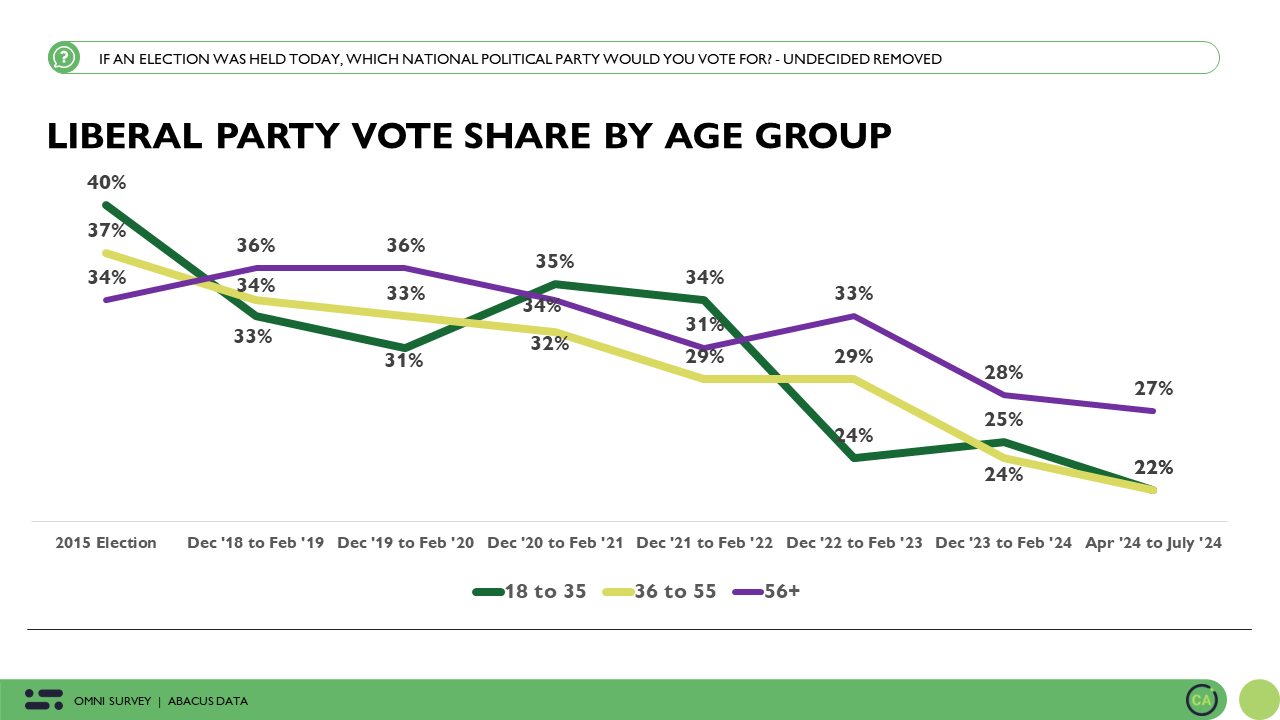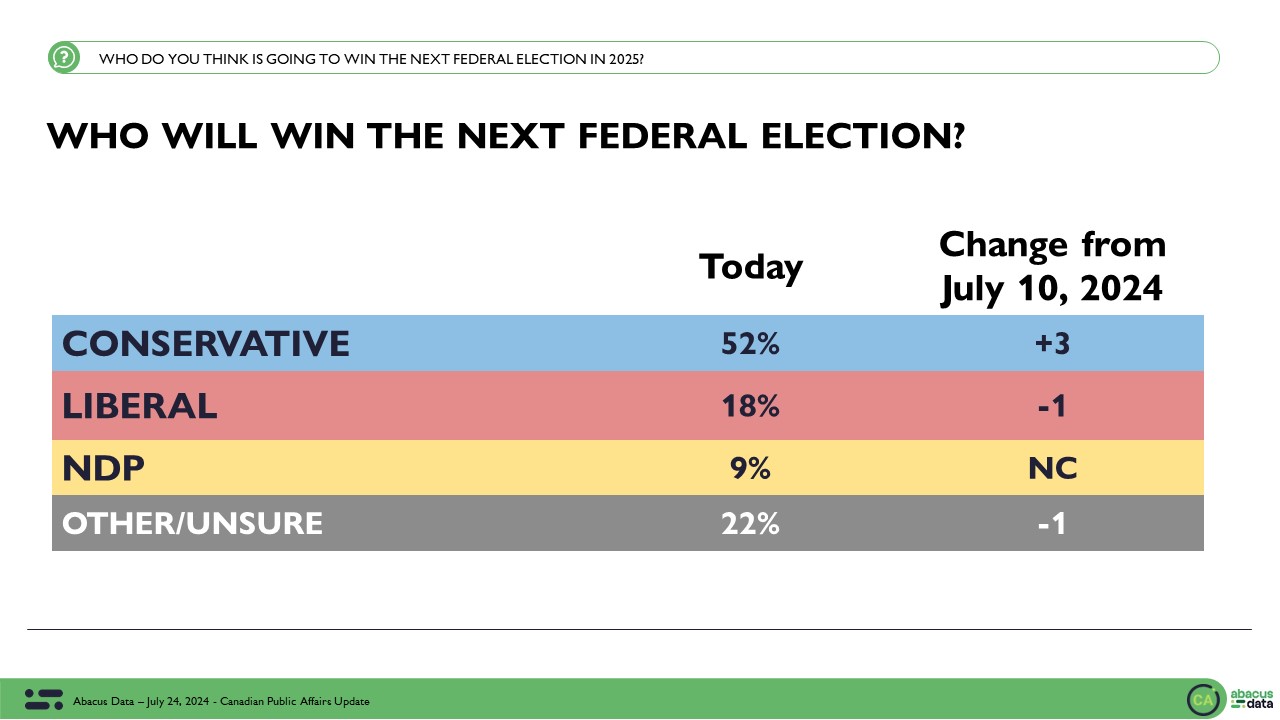Horserace tightens as perceptions about federal vaccine rollout shift negative
February 5, 2021
Interested in a deeper dive on the latest polling in the run-up to a possible election? Register today for David’s new webinar series inFocus with David Coletto on February 9, 2021.
Our latest national polling data shows that an election held today would see the Liberals with 32% support (down 3 points from last month), the Conservatives at 31% (unchanged), the NDP at 18% (up 1) and the Greens at 7% (up 1).

Regionally, the Liberals have a 6-point lead in Ontario and a 5-point lead in Atlantic Canada. In Quebec, the Liberals and BQ are statistically tied, while in BC, we continue to find a close three-way race between the Conservatives, NDP, and Liberals. The Conservatives lead by wide margins in the Prairies.

The federal government’s approval rating trended downward since late 2020. Today, equal numbers approve and disapprove of the government’s overall performance, the first time the numbers had met since before the pandemic began in March 2020.

Along with a negative shift in the government’s approval rating, we also find a rise in the Prime Minister’s negatives. Today, 42% have a negative view of Mr. Trudeau compared with 36% who view him positively. Compared with last month, his negatives are up 5 points while his positives are down two.
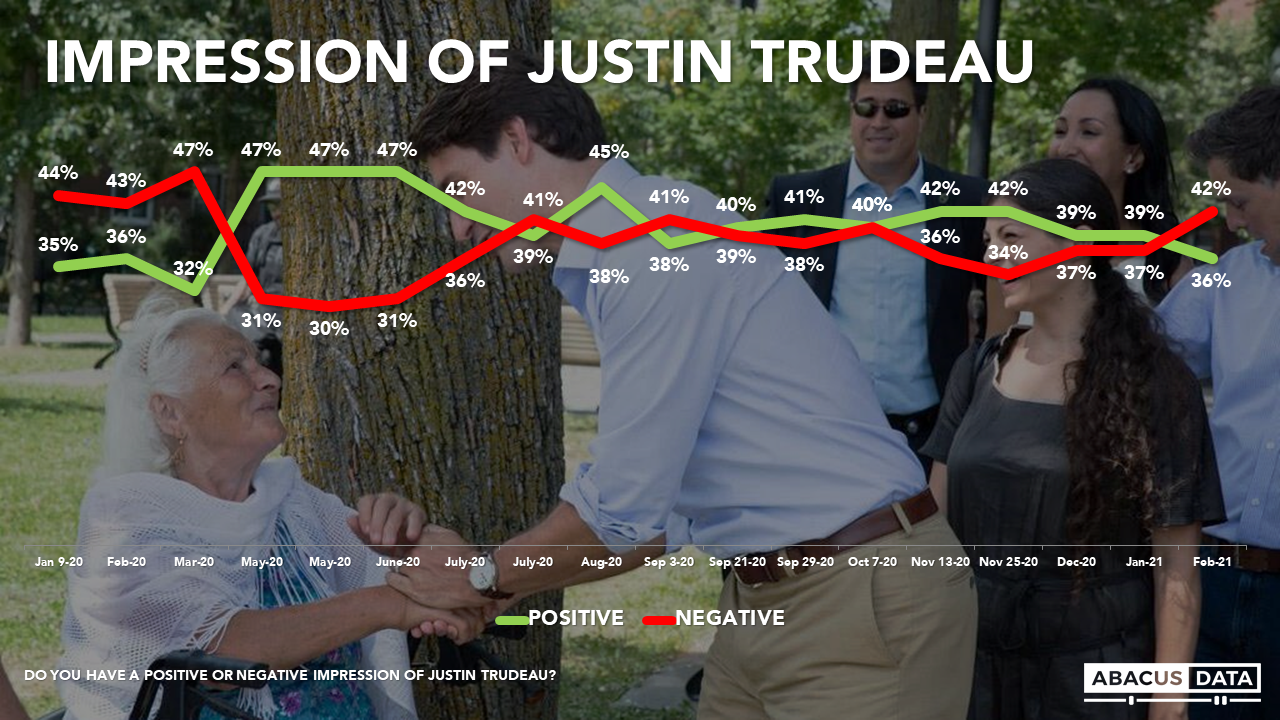
Conservative Leader Erin O’Toole’s negatives have also increased over this period. Today, 30% have a negative view of the Conservative leader while 20% view him positively. This is the highest negative number we’ve measured for Mr. O’Toole since we started tracking his public image.
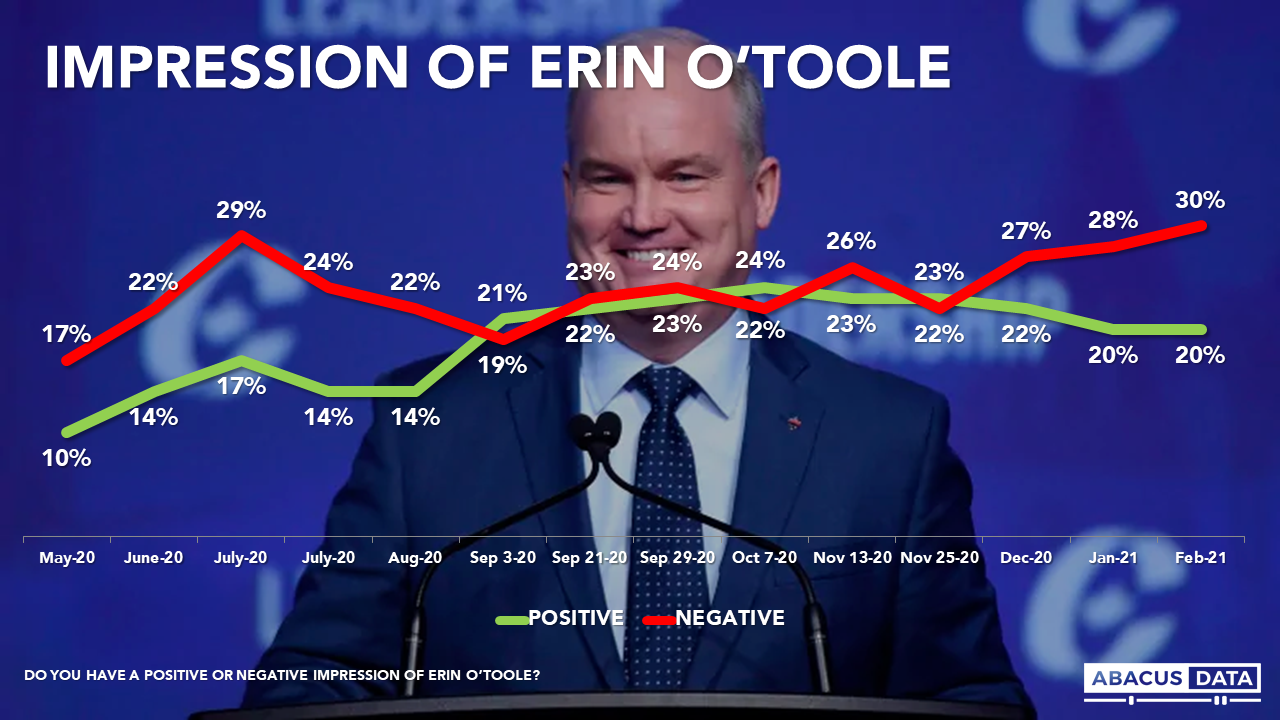
For Mr. Singh, impressions of him have remained relatively consistent over time. One in three Canadians has a positive view of the NDP leader compared with 24% who view him negatively (a slight increase of 3-points since last month).
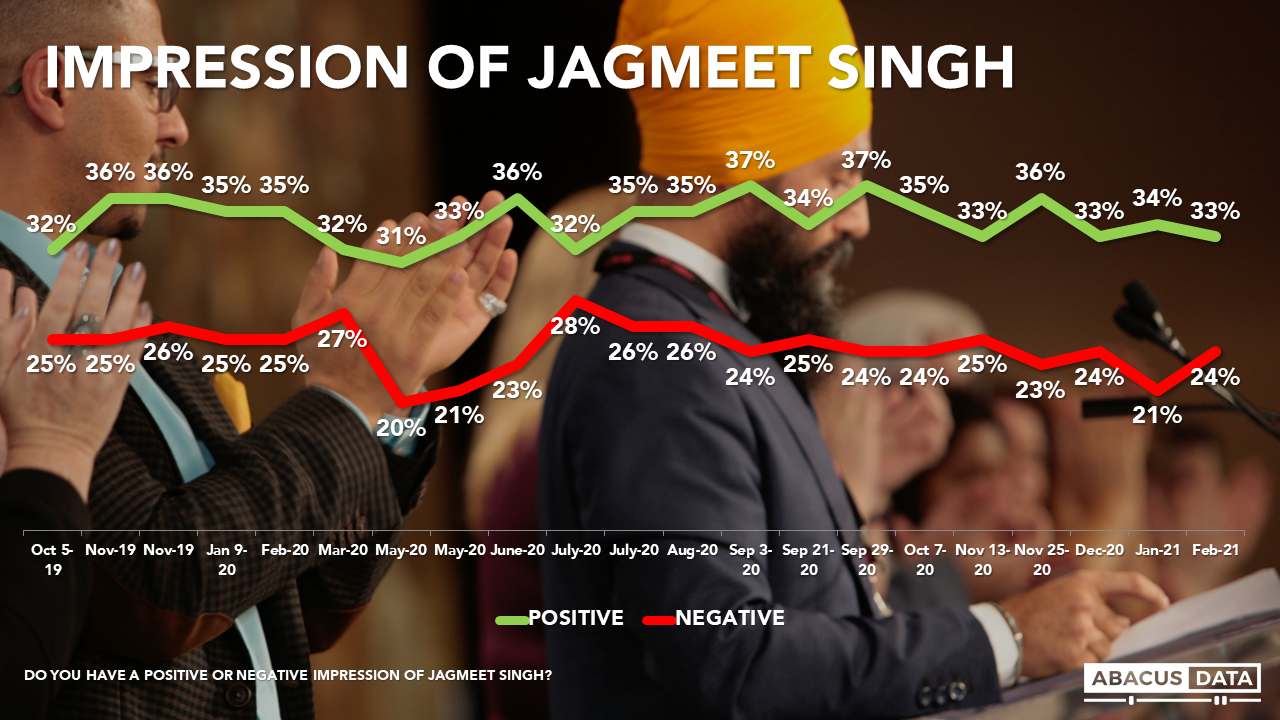
GOVERNMENT COVID-19 PERFORMANCE
Our survey also asked respondents to rate the federal and provincial governments’ performance on a series of COVID-19 related areas. We asked the same set of questions on a survey in mid-January.
The public’s evaluation of the federal government’s performance in all areas has weakened, with the greatest shift in its handling of vaccines. While most Canadians continue to give the government positive or mostly positive assessments of its handling of the vaccine procurement and rollout, the delays and vaccine shortages over the past few weeks have come at a cost.
Today, 25% think the federal government is doing an excellent or good job ordering the vaccines that Canadians needed while 33% think it is doing an acceptable job. Over 4 in 10 give the government negative marks, an increase of 19-points since mid-January.
We find a similar shift in views on the government’s performance getting vaccines in as timely a fashion as possible. On this measure, positive assessments are down 7-points (21% say excellent or good), while negative reviews are up 17%.
In other areas of its COVID-19 response, the federal government continues to get strong assessments in how it shares information, supports the economic needs of Canadians, and supports the provincial governments.

The political risk for the Liberal government on the vaccine rollout becomes apparent when you consider that about 1 in 3 2019 Liberal voters give the Liberals negative ratings on its vaccine performance thus far. While most of these respondents haven’t shifted their voting preferences, it has caused a softening of their impressions towards the government, the Prime Minister, and the Liberal Party. We find downward pressure on all of these core measures,

In contrast to the federal government’s performance, we don’t find much change since last month on how Canadians view their provincial government’s performance on COVID. Negative assessments of how the provincial government is arranging vaccinations in a timely fashion is up 5-points, not nearly as large as the shift in views towards the federal government.

When it comes to vaccination rollout at the provincial level, we find those in the Prairies and Ontario to have more negative assessments of their provincial governments than those in Atlantic Canada, Quebec, or BC.

UPSHOT
According to Bruce Anderson: “Now that vaccines are being shipped and administered, a great deal of coverage and public interest has been devoted to the question of how quickly how many doses will be available in Canada. Stories about competition for doses, production delays, and the sense of uncertainty this leads to are naturally creating some degree of frustration and anxiety.
Whether it will carry a political price for the government is, to my eyes, too early to tell – since vaccinations weren’t available only weeks ago, and most people had expectations that were for being vaccinated in the second and third quarters rather than earlier. For now, the question is measuring confidence or a lack of confidence in the vaccine program. That confidence has come under pressure as unexpected delays crashed into the sense of relief and enthusiasm people were starting to allow themselves to feel.”
According to David Coletto: “Delays in the delivery of vaccines appear to have hurt the Liberals. Government approval, the Prime Minister’s image, and vote share are all down over the past few weeks. Simultaneously, negative perceptions of the government’s handling of the vaccination file have risen sharply.
These shifts underscore the political risk in the vaccine rollout. It is putting pressure not only on the federal government but provincial governments as well. For the first time since the pandemic started, as many Canadians disapprove of the federal government’s performance as approve – a signal that the relentless focus on vaccinations, delays, and procurement has hurt the governing Liberals.
But at the same time, none of the opposition parties seemed to benefit from all of this. Mr. O’Toole’s negatives increased over the same period, and the Conservative vote share didn’t budge an inch. Mr. Singh and the NDP have seen a small uptick in support but nothing that fundamentally changes their position vis-à-vis the Liberals.
It is still early in the vaccine rollout, and perceptions can change as more vaccines arrive in Canada. But this snapshot gives us insight into the politics of vaccinations and the political cost to those perceived to be failing to meet expectations.”
Interested in a deeper dive on the latest polling in the run-up to a possible election? Register today for David’s new webinar series inFocus with David Coletto on February 9, 2021.
And don’t miss any of our research and analysis, plus get our weekly Worth A Look newsletter. Sign up today.
ABOUT ABACUS DATA
We are the only research and strategy firm that helps organizations respond to the disruptive risks and opportunities in a world where demographics and technology are changing more quickly than ever.
Find out more about what we are doing to help clients respond to the COVID-19 pandemic.
We are an innovative, fast-growing public opinion and marketing research consultancy. We use the latest technology, sound science, and deep experience to generate top-flight research-based advice to our clients. We offer global research capacity with a strong focus on customer service, attention to detail and exceptional value.
We were one of the most accurate pollsters conducting research during the 2019 Canadian Election.
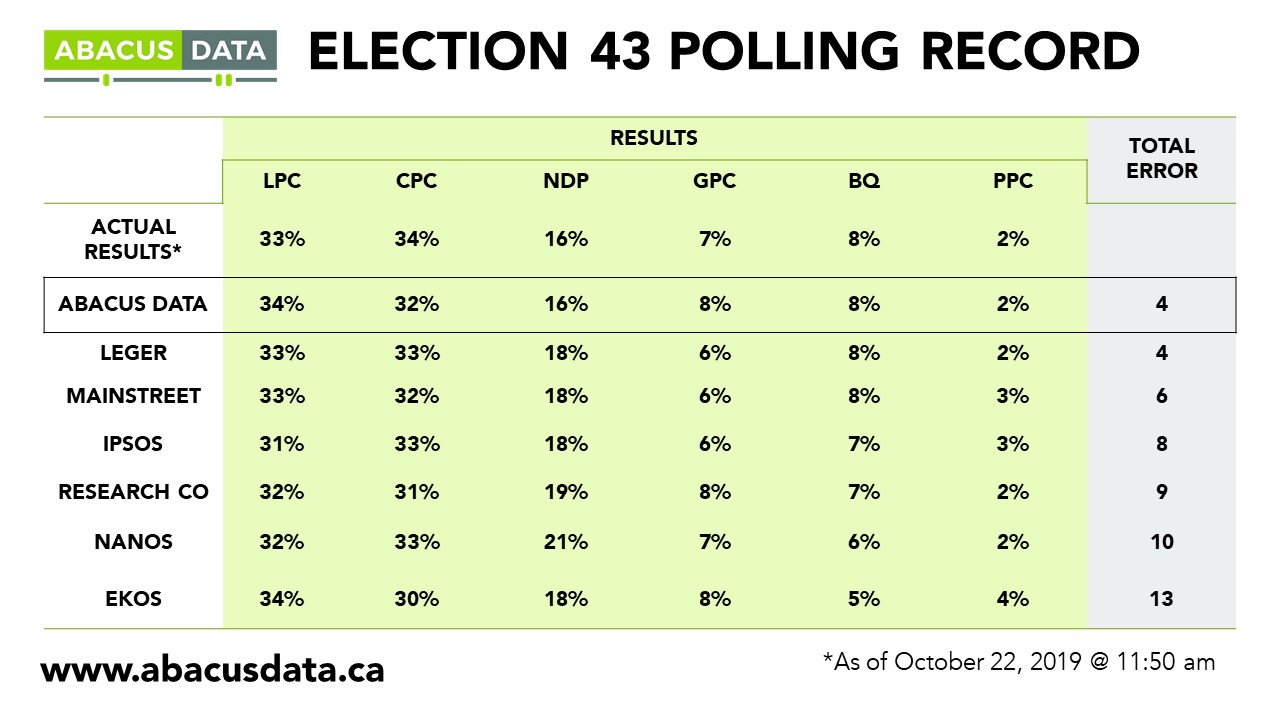
Contact us with any questions.
Find out more about how we can help your organization by downloading our corporate profile and service offering.
METHODOLOGY
The survey was conducted with 3,930 Canadian adults from January 29 to February 3, 2021. A random sample of panelists were invited to complete the survey from a set of partner panels based on the Lucid exchange platform. These partners are typically double opt-in survey panels, blended to manage out potential skews in the data from a single source.
The margin of error for a comparable probability-based random sample of the same size is +/- 1.6%, 19 times out of 20.
The data were weighted according to census data to ensure that the sample matched Canada’s population according to age, gender, educational attainment, and region. Totals may not add up to 100 due to rounding.




